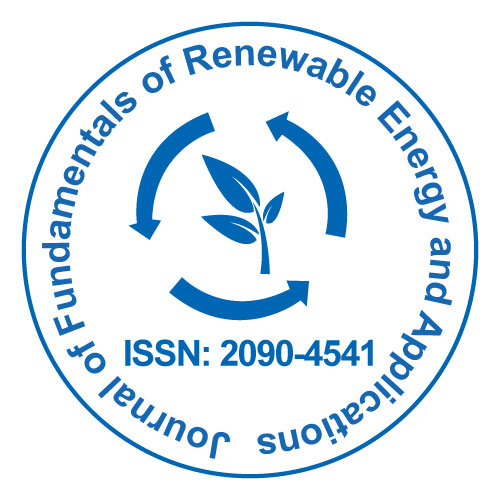
Journal of Fundamentals of Renewable Energy and Applications
Acesso livre
ISSN: 2090-4541

ISSN: 2090-4541
Adegunloye DV and Asefon EO
The potential Milicia excelsa sawdust as both fermentation medium and substrate for bioethanol production was investigated. Fermentation of the sawdust was carried out for 120 hours. Three liters of distilled water was added into 500 g of sterilized and unsterilized samples (sawdust) respectively with the addition of 4.5 g of Saccharomyces cerevisiae (yeast) and fermentation was terminated every 24 hrs. Microbial population and organisms responsible for the fermentation were determined using standard microbiological technique. Temperature, pH and total titratable acidity of the substrates were monitored daily for 120 hrs. Bacterial population at 0 hr was 7.0 × 103 cfu/ml, it reduced to 0.03 × 103 cfu/ml after 120 hrs of the fermentation while fungal population was 5.0 × 103 sfu/ml at 0 hour and it reduced to 0.01 × 105 sfu/ml at 120 hrs. pH of the sterilized sawdust was between 5.2 and 9.9 while that of the unsterilized was between 5.5 and 9.8. Initial total titratable acidity was 0.001 mol/dm3, while total titratable acidity during the fermentation of sterilized samples decreased from 0.017 to 0.005 mol/dm3, that of unsterilized samples from 0.023 to 0.007 mol/dm3. Bacterial isolated before the fermentation was Staphylococcus aureus, Micrococcus spp, Actinomycetes spp., while during fermentation were: Clostridium cellulovorans, Bacillus spp, Lactobacillus plantarum. The fungi isolated were Aspergillus niger, Rhizopus spp, Mucor mucedo and Saccharomyces cerevisiae. The yield of the bioethanol generated from the fermentation was 105, 205, 295, 239, and 163 ml at 24, 48, 72, 96 and 120 hrs respectively for the sterilized samples and 65, 139, 214, 191, and 168 ml at 24, 48, 72, 96 and 120 hrs respectively for the unsterilized samples. This implies that bioethanol can be produced from the fermentation of Milicia excelsa sawdust with its highest yield at 72 hrs of fermentation thereby renewing wastes into useful products and reducing environmental pollution.